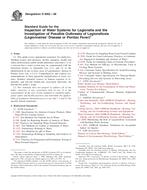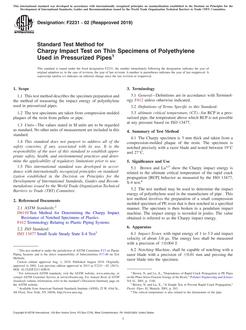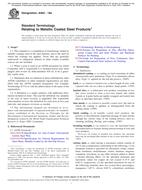1.1 This guide outlines procedures and operations for the irradiation of raw, untreated, fresh (chilled), or frozen finfish and aquatic invertebrates, while ensuring that the irradiated product is safe and wholesome.
1.1.1 Aquatic invertebrates include molluscs, crustacea, echinoderms, etc.
1.1.1.1 Molluscs include bivalve shellfish, such as clams, mussels, and oysters; snails; and cephalopods, such as squid and octopus.
1.1.1.2 Crustacea include shellfish such as shrimp, lobster, crabs, prawns and crayfish.
1.1.1.3 Echinoderms include sea urchins and sea cucumbers.
1.2 This guide covers absorbed doses used to reduce the microbial and parasite populations in aquatic invertebrates and finfish. Such doses typically are below 10 kGy (1).
1.3 The use of reduced-oxygen packaging (vacuum or modified atmosphere, and including products packed in oil) with irradiated, raw product is not covered by this guide. The anaerobic environment created by reduced-oxygen packaging provides the potential for outgrowth of, and toxin production from, Clostridium botulinum spores.
1.4 This guide does not cover the irradiation of smoked or dried fish to reduce microbial load or to control insect infestation.
1.5 The values stated in SI units are to be regarded as standard. No other units of measurement are included in this standard.
1.6 This standard does not purport to address all of the safety concerns, if any, associated with its use. It is the responsibility of the user of this standard to establish appropriate safety and health practices and determine the applicability of regulatory requirements prior to use.
Product Details
- Published:
- 02/01/2009
- Number of Pages:
- 6
- File Size:
- 1 file , 110 KB
- Redline File Size:
- 2 files , 180 KB


